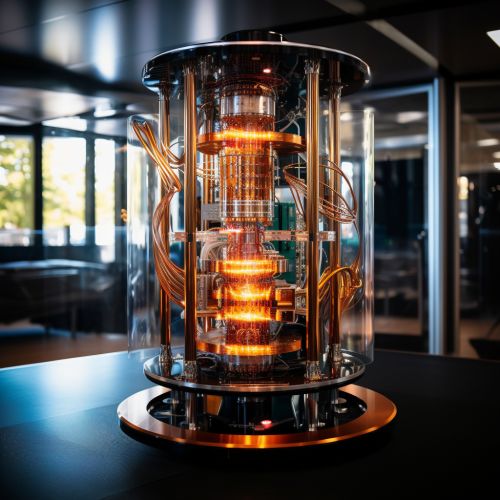Quantum Computing with Quantum Algorithms and Protocols
Introduction
Quantum computing is a rapidly evolving field that leverages the principles of quantum mechanics to perform computational tasks. Unlike classical computers that use bits for processing information, quantum computers use quantum bits, or qubits, which can exist in multiple states simultaneously due to the phenomenon of superposition. This allows quantum computers to process a vast number of possibilities at once, potentially solving complex problems much faster than classical computers.


Quantum Algorithms
Quantum algorithms are a set of instructions used in quantum computing. These algorithms leverage the unique properties of qubits, such as superposition and entanglement, to perform calculations more efficiently than classical algorithms. Some of the most well-known quantum algorithms include Shor's algorithm, Grover's algorithm, and the quantum Fourier transform.
Shor's Algorithm
Shor's algorithm, proposed by Peter Shor in 1994, is a quantum algorithm for integer factorization. This algorithm can factor large numbers exponentially faster than the best-known classical algorithms, making it a significant threat to current cryptographic systems that rely on the difficulty of factorization.
Grover's Algorithm
Grover's algorithm, proposed by Lov Grover in 1996, is a quantum algorithm for searching an unsorted database with quadratic speedup compared to classical algorithms. While Shor's algorithm provides an exponential speedup for specific problems, Grover's algorithm provides a more general-purpose quadratic speedup.
Quantum Fourier Transform
The quantum Fourier transform (QFT) is a linear transformation on quantum bits and is the quantum analogue of the discrete Fourier transform. The QFT is part of many quantum algorithms, including Shor's algorithm and quantum phase estimation.
Quantum Protocols
Quantum protocols are rules for the interaction of quantum systems. They are used to perform tasks such as quantum teleportation, quantum key distribution, and quantum error correction.
Quantum Teleportation
Quantum teleportation is a protocol that transfers the state of a qubit from one location to another, without the physical transportation of the qubit itself. This is achieved through the phenomenon of quantum entanglement.
Quantum Key Distribution
Quantum key distribution (QKD) is a secure communication method that implements a cryptographic protocol involving components of quantum mechanics. It enables two parties to produce a shared random secret key known only to them, which can then be used to encrypt and decrypt messages.
Quantum Error Correction
Quantum error correction is a set of techniques for maintaining the integrity of quantum information in a quantum computer, even in the presence of errors due to decoherence or other quantum noise. Quantum error correction is essential for fault-tolerant quantum computing.
Conclusion
Quantum computing, with its unique algorithms and protocols, promises to revolutionize the field of computation. While the technology is still in its early stages, the potential applications of quantum computing are vast, ranging from cryptography to optimization problems, and could have profound implications for a variety of industries.
